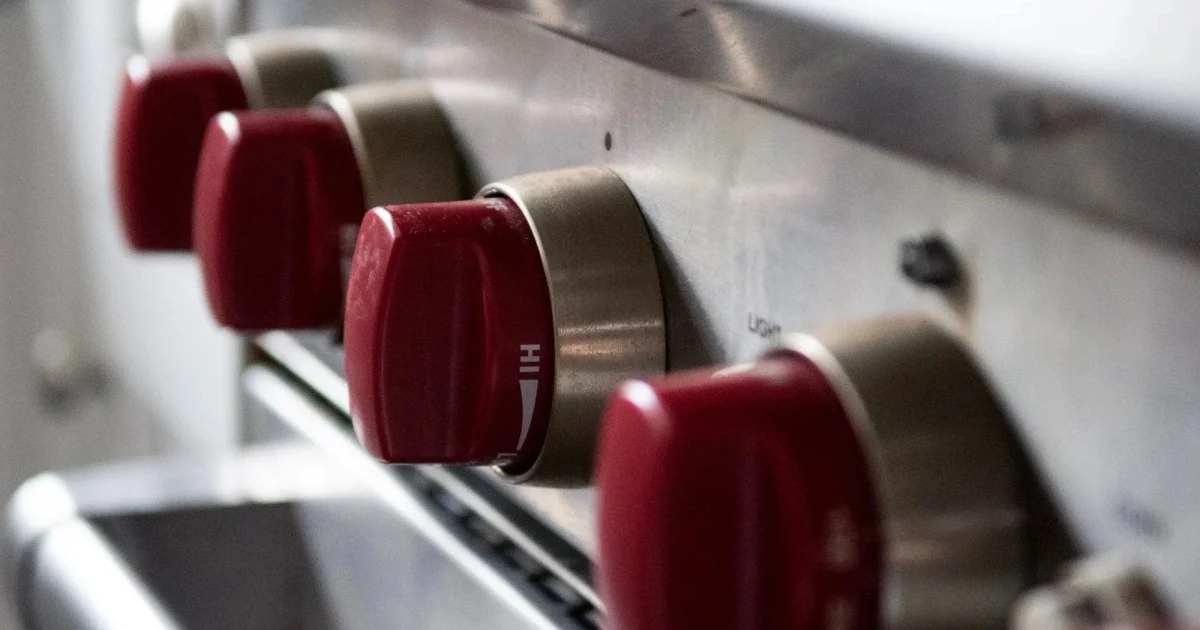Highlights: A study this summer found that using a single gas stove burner on high can raise levels of cancer-causing benzene above what’s been observed from secondhand smoke.
A new investigation by NPR and the Climate Investigations Center found that the gas industry tried to downplay the health risks of gas stoves for decades, turning to many of the same public-relations tactics the tobacco industry used to cover up the risks of smoking. Gas utilities even hired some of the same PR firms and scientists that Big Tobacco did.
Earlier this year, an investigation from DeSmog showed that the industry understood the hazards of gas appliances as far back as the 1970s and concealed what they knew from the public.
It’s a strategy that goes back as far back as 1972, according to the most recent investigation. That year, the gas industry got advice from Richard Darrow, who helped manufacture controversy around the health effects of smoking as the lead for tobacco accounts at the public relations firm Hill + Knowlton. At an American Gas Association conference, Darrow told utilities they needed to respond to claims that gas appliances were polluting homes and shape the narrative around the issue before critics got the chance. Scientists were starting to discover that exposure to nitrogen dioxide—a pollutant emitted by gas stoves—was linked to respiratory illnesses. So Darrow advised utilities to “mount the massive, consistent, long-range public relations programs necessary to cope with the problems.”
These studies didn’t just confuse the public, but also the federal government. When the Environmental Protection Agency assessed the health effects of nitrogen dioxide pollution in 1982, its review included five studies finding no evidence of problems—four of which were funded by the gas industry, the Climate Investigations Center recently uncovered.
Karen Harbert, the American Gas Association’s CEO, acknowledged that the gas industry has “collaborated” with researchers to “inform and educate regulators about the safety of gas cooking appliances.” Harbert claimed that the available science “does not provide sufficient or consistent evidence demonstrating chronic health hazards from natural gas ranges”—a line that should sound familiar by now.



Induction is cheap as shit nowadays, and faster, so no-one should install new gas stoves. When renovating I ripped out my gas line.
HOWEVER I completely disagree with Alec on resistive electric stoves being “fine”. They’re terrible. They have ENORMOUS thermal inertia. He says “just move the pan off the heater”, but that doesn’t take into account that just getting a pan to the correct temperature is much harder on resistive electric. It takes forever to heat up an empty pan, but if you wait until the food is cooking to turn down the heat, it’s already too late and your food will be overcooked. Frying an egg is the worst, by the time that the pan is hot you gotta kill the heat entirely or the egg will be burnt so there is no margin for adjustment. Ugh. With induction it’s so much easier, you can just adjust the heat based on how the egg is frying and the pan will actually cool down or heat up enough that the egg will come out alright.
I mean sure depending on ventilation and personal opinions on air quality then resistive may be favorable over gas, but if I’m honest, if induction didn’t exist I’d probably take my chances with cancer.
You know I wonder to what extent that is about people having old electric stoves that have bang on bang off resistive electric coils rather than like, a tuned consistent current coil that heats up and stays hot at a temperature. Cause the bang on bang off coil is probably going to have more thermal inertia, or, you’d want more thermal inertia, for a more consistent heat. I dunno about the thermal inertia of the coil in general, though, I’ve definitely cooked on shitty enough electric stoves that just an egg, butter, and a nonstick pan will cook for like 3 seconds, go back to being off for a minute, and then the coil will heat up and cook the egg for another 3 seconds, which is fuckin crazy, that shit blows.
I don’t see how resistive is any different from gas in that respect.
I’m not particularly on any side of this discussion, but gas is a lot more responsive in terms of temperature changes than a resistive hob.
You can go from full to lowest and that change will apply to the pan pretty much immediately. As the other person said, there’s thermal inertia with the element of a resistive hob, it’s going to take a bit of time to cool to a lower temperature
You don’t see how turning down a gas burner will lower the temperature in a pan faster than waiting for a red hot spiral of metal to cool off?